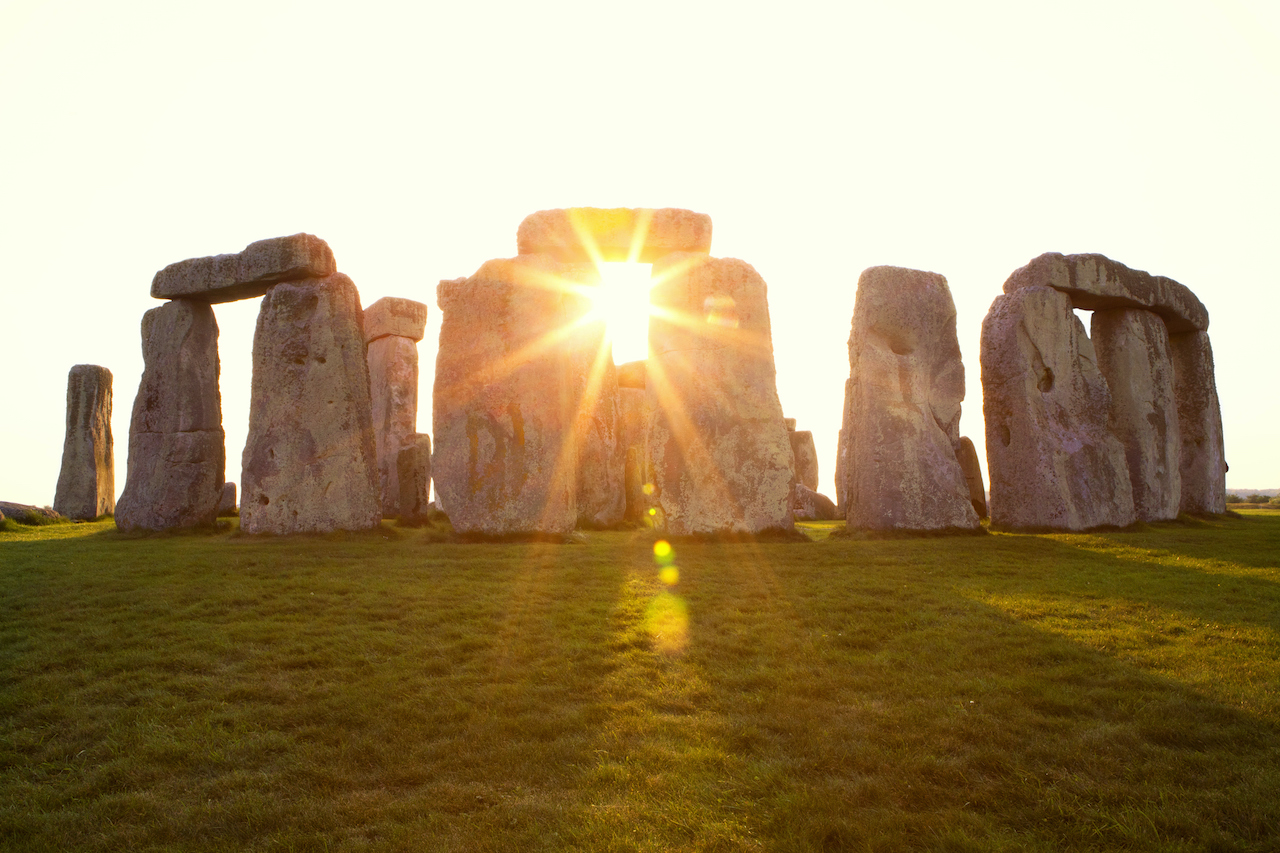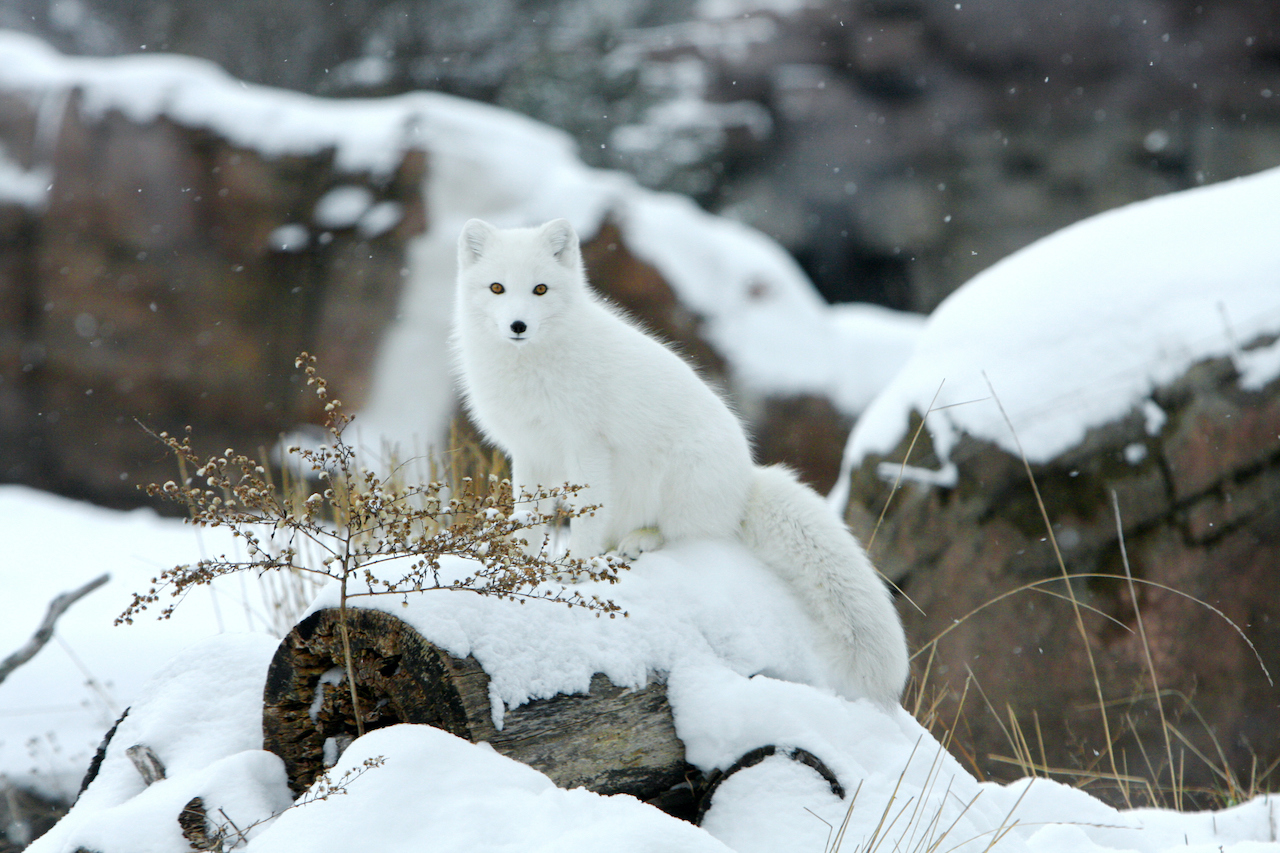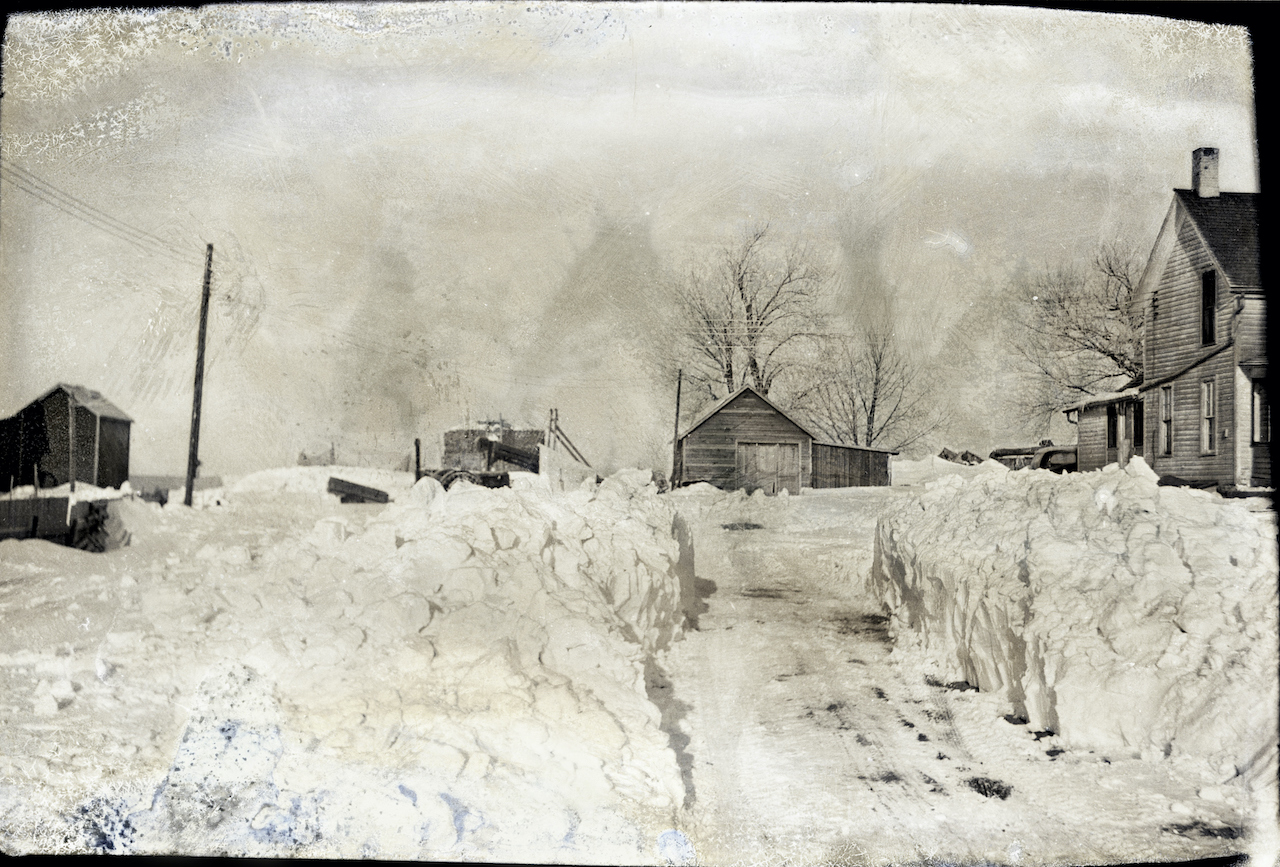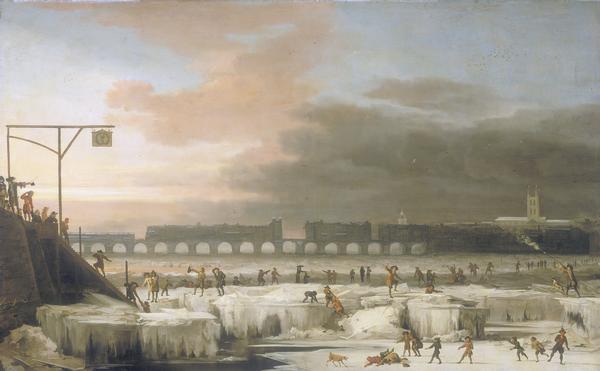Winter: The coldest season
The winter solstice brings shifts in temperature and icy weather as the sun dips to its lowest point in the sky.
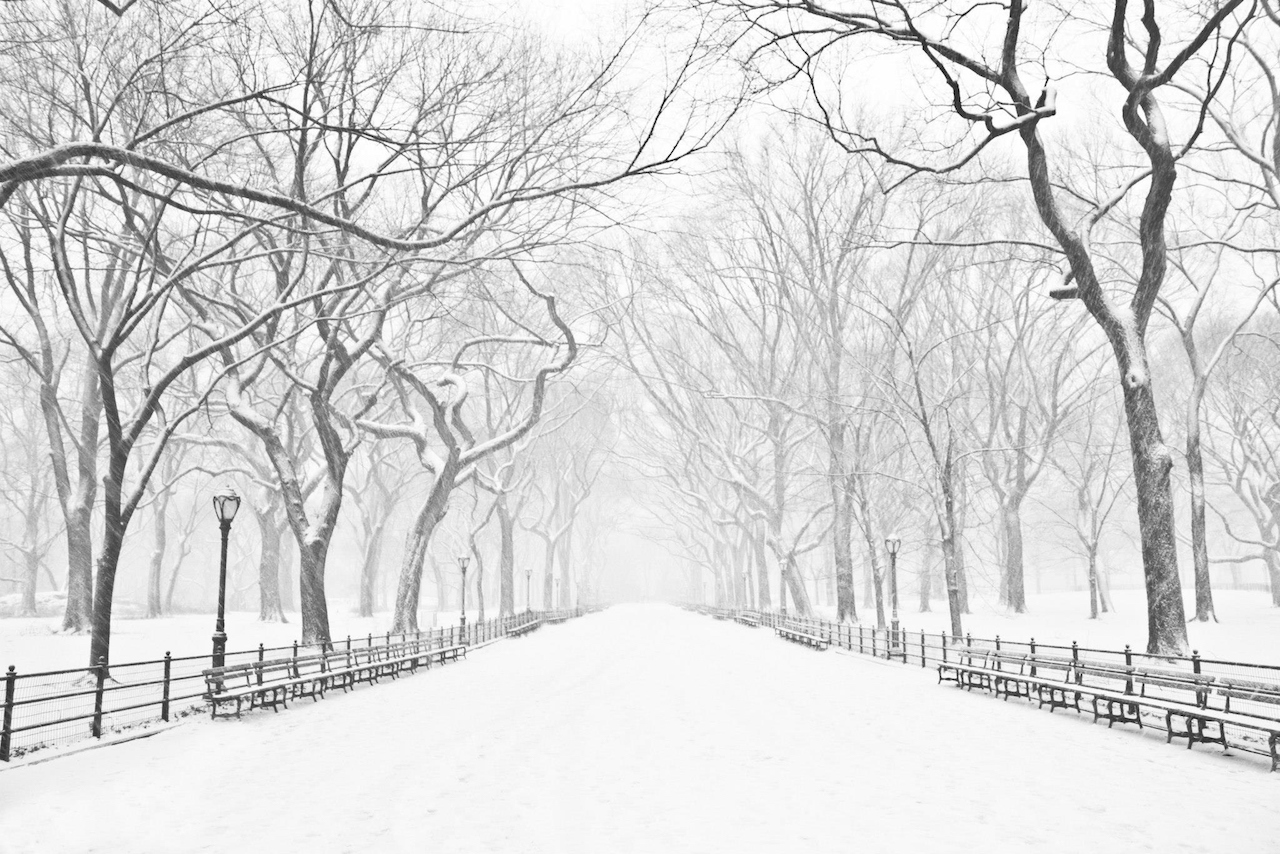
Winter, the coldest season of the year, comes between autumn and spring. It is associated with plunging temperatures and icy weather, but its impact and timing change according to location. The farther an area lies from the equator, the colder temperatures it experiences. Temperatures in equatorial regions stay relatively constant despite the shifting seasons. This is because, due to the curve of the Earth, the equatorial areas get more sunlight, according to the BBC.
Shifting time frames
Most people think the coldest season begins during the winter solstice, but there are in fact two definitions of winter.
Astronomical winter — what most people think of as winter — is defined by Earth's position around the sun and ranges from the winter solstice to the vernal equinox. The winter solstice marks the time when the sun passes directly over the equator. In the Northern Hemisphere, it falls around December 21, and in the Southern Hemisphere it occurs around June 21, according to the National Oceanic and Atmospheric Association (NOAA). It is the shortest day of the year, and has been noted and celebrated by a wide variety of cultures around the world.
At the time of the winter solstice, the corresponding pole is tipped about 23.5 degrees away from the sun, according to the NWS. On that day in the Northern Hemisphere, the North Pole is farther from the heat-producing star, while the Southern Hemisphere, which experiences summer, is closer.
But anyone who regularly engages in winter sports might tell you that winter weather tends to fall before the middle of December or June. Meteorological winter falls sooner, spanning the three-month period from December to March, according to NOAA. It is based on the annual temperature cycle and the calendar rather than Earth's journey around the sun.
Winter in the hemispheres
People living in the Northern Hemisphere are more likely to experience a colder winter than those in the Southern Hemisphere, according to physicist Dr. Christopher Baird. In fact, all of the coldest countries in the world are located in the Northern Hemisphere. These include Kazakhstan, Russia, Greenland, Canada, the United States, Iceland, Finland, Estonia and Mongolia, according to Earth & World. (Though not a country, Antarctica, in the Southern Hemisphere, is technically the coldest region on Earth.)
So why do so many countries in the Northern Hemisphere get much colder than those in the Southern Hemisphere? This occurs because there are a few major differences between the two hemispheres when it comes to factors that affect climate, according to Public Broadcasting Service (PBS): the size of a land mass, how close the land is to a polar region and the amount of ocean coverage.
Get the world’s most fascinating discoveries delivered straight to your inbox.
First, there are larger masses of land at higher latitudes in the Northern Hemisphere, even within the Arctic Circle, such as Greenland, the northern parts of Norway, Sweden, Finland and Iceland and the frigid tundras of North America, Europe and Asia. According to World Atlas, 68%of Earth’s land is in the Northern Hemisphere.
In contrast, the bigger land masses in the Southern Hemisphere are closer to the equator and no countries are located on or below the Antarctic Circle — only the frozen unpopulated continent of Antarctica.
Another important temperature moderator is the ocean. Oceans cover 81% of the Southern Hemisphere, compared to only 61% in the Northern Hemisphere, according to the book "Atmospheric Temperature Profiles of the Northern Hemisphere" (Springer, 2012). All of this water, which stores and conducts heat better than land, helps keep temperatures somewhat warmer and more stable.
Adapting to the weather
Winter brings many changes to the world around it. During winter, some animals migrate, which means moving to another area for a season's time. Usually, animals go south to warmer areas during the winter, according to the book "Animal Movement Across Scales". In response to global warming, some bird species now arrive in spring breeding grounds earlier, and lay eggs earlier, according to a report by the World Wildlife Fund (WWF). In Europe, some birds that normally migrate have stopped migrating altogether, according to the report.
Species movement has to do with changes in habitat, as well, Keith Peterman, a professor of chemistry at York College of Pennsylvania, and Gregory Foy, an associate professor of chemistry at York College of Pennsylvania, explained to Live Science. Migration isn't just about staying warm. Animals can be forced out of their normal habitat because of changes in their food supply and introduction of new bacteria or viruses (due to the change in climate) where they have poor resistance.
Other animals begin a period of hibernation during the winter, passing much of the season in a near-sleep state. Because many plants die or are dormant, animals may stockpile food to help them through winter periods, according to World Atlas.
In addition to changing their locations and habits, some animals may also change their appearance. Animals such as hares and foxes may change their coloration to blend into snowy landscapes better, according to the journal Biological Reviews. For example, the snowshoe hair is brown during warm months, but then turns white to blend in with the snow, according to National Geographic. Other animals might grow thicker fur to help them to stay warm.
Extreme temperatures and unusual winters
Antarctica currently boasts the lowest temperature on record. On Aug. 10, 2010, scientists recorded a temperature of minus 136 degrees F (minus 93.2 degrees C) on Antarctica's East Antarctic Plateau, according to NASA.
The lowest temperature in the United States was set in Alaska on Jan. 23, 1971, according to The Weather Channel. The mercury plummeted to minus 80 F (minus 62 C) in Prospect Creek, north of Fairbanks.
Although winter tends to be a hard time for animals and humans alike, some winters host more extreme weather than others. Some of the extreme storms are listed below:
Known as the Storm of the Century, a storm system that formed over the Gulf of Mexico in March 1993 blanketed the Eastern United States with snowfall, scattered tornadoes and hurricane-force winds of up to 120 mph (193 km/h), according to NOAA. The storm affected 26 states, with snow falling as far south as the usually sunny Jacksonville, Florida. Drifts piled up as high as 35 feet (11 meters), and many Southern states, unprepared for the need for large-scale snow removal, shut down completely.
In Feb. 2012, a deadly cold wave ravaged Europe, causing more than 800 deaths. Temperatures reached as low as minus 38.6 degrees Fahrenheit (minus 39.2 Celsius), and snow blanketed several countries, setting records for many of them. The second-longest river in Europe, the Danube, froze, as did the canals of Venice. Northern Africa also felt the breath of the storm, with snow covering parts of the Sahara. More than 100,000 people were trapped by snow and ice.
On Nov. 11, 1940, the "Armistice Day blizzard" quickly plunged temperatures from 60 degrees down to single digits in less than 24 hours, according to the Star Tribune. Hurricane-force winds — up to 80 mph (129 km/h) — pushed snow into 20-foot drifts across the Midwest. The surprise weather change claimed 49 lives, many of them duck hunters trapped in remote areas.
In March 1888, a snowstorm blanketed the northeastern United States, from Maine down to Washington, D.C., with 55 inches (139.7 centimeters) of snow, according to the History Channel. Over four feet (1.2 meters) of snow dropped in Connecticut and Massachusetts, while New York and New Jersey boasted almost three and a half feet (one meter). The storm sank 200 ships and killed 400 people, according to the New England Historical Society.
In the winter of 1783, temperatures dropped significantly in Europe, reaching as low as 3.6 degrees F (2 degrees C).
Historically, the Little Ice Age, which occurred between the 14th and 19th centuries, was a significant period of extreme cold, according to the American Geophysical Union. Several volcanic eruptions triggered the expansion of Arctic sea ice and set off a chain reaction of lower temperatures around the world, according to a study published in the journal Geophysical Research Letters.
The climate has been tied to many trends and events, according to the History Channel, including the Black Death, the Thirty Years' War, witch hunts on both sides of the Atlantic, the French Revolution and the invention of the bicycle.
Staying warm
Cold winters can quickly bring on life-threatening medical conditions, such as hypothermia. Hypothermia is when a human's body temperature drops below 95 F (35 C), according to the Mayo Clinic. Cold temperatures and wind chill can make a person's body temperature drop in just minutes.
The cold temperatures can also cause frostbite, the freezing of skin and tissue. Cold temperatures are just one factor when it comes to frostbite susceptibility. "Other factors also come into play including the age/size of the individual (e.g., quicker onset in small children) or if an individual has less than optimal circulation to distal body parts such as hands/finger/feet/toes," said Dr. Nicholas Lorenzo, the chief medical officer with MeMD, a web-based health services provider.
To avoid hypothermia and frostbite, it is important to keep all skin covered and dry during cold weather. Once a person has hypothermia or frostbite, the primary treatment is rewarming the patient.
Additional resources
To find out when the midpoint of winter is, read this article by SPACE.com. Additionally, you can read more about the temperatures in Antarctica at the British Antarctic Survey website.
Bibliography
"Atmospheric Temperature Profiles of the Northern Hemisphere". Young Yee, Kueyson Y. Yee, Erik Y. Yee. Springer Science & Business Media (2012). https://books.google.com/books?id=vU7onXXCVc4C&printsec
"Animal Movement Across Scales". Chapman, B. B., Hulthén, K., Wellenreuther, M., Hansson, L. A., Nilsson, J. Å., & Brönmark, C. (2014). https://www.researchgate.net/profile/Christer-Broenmark/publication/299888982
"Function and underlying mechanisms of seasonal colour moulting in mammals and birds: what keeps them changing in a warming world?" Biological Reviews (2018). https://onlinelibrary.wiley.com/doi/full/10.1111/brv.12405
"Unusual Volcanic Episode Rapidly Triggered Little Ice Age Researchers Find". American Geophysical Union (2012). https://news.agu.org/press-release/unusual-volcanic-episode-rapidly-triggered-little-ice-age-researchers-find/

Nola Taylor Tillman is a contributing writer for Live Science and Space.com. She loves all things space and astronomy-related, and enjoys the opportunity to learn more. She has a Bachelor’s degree in English and Astrophysics from Agnes Scott college and served as an intern at Sky & Telescope magazine. In her free time, she homeschools her four children.
- Ailsa HarveyContributor
